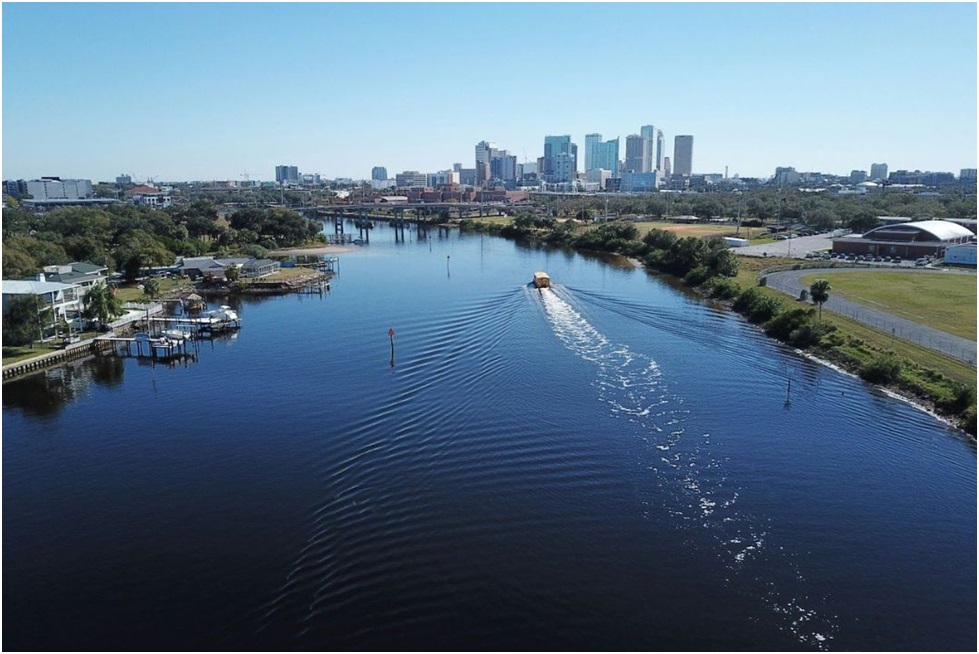
Regarding property management in Tampa, HomeRiver Group stands out from the crowd. Our unparalleled local expertise and robust national platform mean your property is in the best hands. Beyond basic management, we provide comprehensive services that drive profitability and tenant satisfaction.
In an ever-evolving real estate market, understanding the dynamics of local rental markets is crucial for both tenants and landlords. With its vibrant culture, beautiful beaches, and booming economy, Tampa has become a hotspot for renters and buyers seeking to call this dynamic city home.
In this article, we will explore the factors influencing average rent in Tampa, highlight affordable and expensive neighborhoods, and discuss the pros and cons of renting in this vibrant city.
Factors Influencing Tampa Rent Prices
When considering the average rent in Tampa, it's crucial to understand the factors influencing these prices. Several elements drive the rental market, affecting both tenants and landlords.
Economic Growth And Job Opportunities
Tampa's economy is on a consistent upward trajectory, with burgeoning technology, healthcare, finance, and tourism sectors. This economic development attracts professionals from various fields, increasing demand for housing and subsequently pushing rent prices upward. Landlords and investors see Tampa as a fertile ground for property investments, while renters might face competitive market conditions.
Population Growth
With its appealing climate, vibrant culture, and economic opportunities, Tampa continues to witness a significant influx of new residents each year. This population growth significantly impacts demand in the rental market, with more individuals and families looking for places to live, increasing the average rent in Tampa.
Location And Neighborhood Amenities
The diversity of Tampa's neighborhoods plays a crucial role in rental pricing. Areas closer to the downtown core, waterfront properties, or neighborhoods with high-rated schools tend to command higher rents due to their desirability. On the other hand, more affordable options can be found in upcoming or suburban areas.
Real Estate Market Trends
When analyzing rental prices, the broader real estate market trends cannot be overlooked. Factors such as housing availability, trends in home buying versus renting, and even the construction of new rental properties can all influence the average rent in Tampa. For example, an increase in new developments might initially lead to competitive pricing to attract tenants but could stabilize prices over time as supply meets demand.
Government Policies
Local and state government policies, including regulations on rent control, zoning laws, property taxes, and development incentives, also influence rental prices. While Tampa does not have rent control policies, shifts in other areas of legislation or zoning can impact the costs associated with owning and renting property, influencing rental prices.
Affordable Areas In Tampa
When discussing the average rent in Tampa, tenants and landlords must know about the city's more affordable areas. These locales offer opportunities for renters seeking budget-friendly accommodations and landlords aiming to invest in up-and-coming neighborhoods.
Temple Terrace
Located northeast of Downtown Tampa, Temple Terrace is known for its lush landscapes and historical sites. Despite its appealing aesthetics, the area remains one of the more affordable places in Tampa, with average rents significantly lower than the city’s average. It's an excellent spot for renters looking for a tranquil environment without breaking the bank and for landlords interested in properties with potential value appreciation.
University Square
Adjacent to the University of South Florida, University Square is a hub for students and young professionals. The demand for housing here keeps the market dynamic, yet rents tend to stay more affordable than other areas in Tampa. This neighborhood is perfect for landlords aiming to cater to the student and young professional demographic and for tenants searching for cost-effective options near educational institutions and employment opportunities.
Sulphur Springs
Sulphur Springs has a rich history and a community-oriented vibe. Known for its natural springs and parks, it presents a suburban feel within the city. This area offers some of the most affordable rental prices in Tampa, making it attractive for tenants who prioritize budgets and outdoor spaces. For landlords, Sulphur Springs has excellent potential for investment, especially with ongoing revitalization efforts to enhance the neighborhood’s appeal without significantly impacting current rent levels.
Expensive Neighborhoods In Tampa
Understanding the city's most expensive neighborhoods is crucial for tenants and landlords when exploring the landscape of renting in Tampa. These areas, known for their upscale amenities, desirable locations, and high-quality living standards, often command above-average rents.
Harbor Island
Nestled close to downtown Tampa, Harbor Island is a coveted residential area that boasts luxury apartments, waterfront properties, and an array of high-end amenities. It's a prime location for those seeking an urban lifestyle with easy access to Tampa's vibrant city life, restaurants, and entertainment options. Consequently, the average rent in Harbor Island ranks among the highest in Tampa, reflecting the neighborhood's premium offerings and exceptional living environment.
Davis Islands
Davis Islands is another high-profile neighborhood that commands premium rents. Known for its picturesque streets, waterfront views, and exclusive community, it's a favorite among those who prioritize tranquility and luxury. The islands offer a unique blend of suburban and urban living, with easy access to downtown Tampa's amenities. Properties here are in high demand, with rents significantly above the city's average.
South Tampa
South Tampa, encompassing areas such as Palma Ceia, Bayshore Beautiful, and Hyde Park, is renowned for its historic homes, upscale boutiques, and vibrant dining scene. The neighborhood's charm and proximity to top-rated schools and recreational facilities make it an attractive option for families and professionals alike. The demand for rental properties in South Tampa results in higher rental prices, making it one of the most expensive neighborhoods in Tampa.
New Tampa
New Tampa is characterized by its master-planned communities, modern amenities, and sprawling green spaces. This neighborhood appeals to those looking for suburban peace and urban convenience. With its high-quality housing options, recreational parks, and shopping centers, New Tampa's rental market is robust, with prices reflecting the quality of life it offers.
Renting In Tampa: Pros And Cons For Tenants
Tampa offers a variety of living options for tenants. Understanding the average rent in Tampa and weighing the pros and cons of renting here is essential for making an informed decision.
Pros
- Diverse Living Options: Tampa boasts a wide range of rental properties, from luxury apartments to traditional homes, catering to different budgets and lifestyles.
- Economic Growth: Tampa's rapidly expanding job market in technology, healthcare, and finance industries provides ample employment opportunities.
- Vibrant Lifestyle And Amenities: Tampa renters enjoy access to world-class beaches, dining and entertainment options, and year-round outdoor activities.
- No State Income Tax: Florida's lack of a state income tax can increase disposable income for residents, making renting in Tampa financially appealing for many.
Cons
- Rising Rental Costs: As Tampa continues to grow in popularity, the demand for housing has increased rental prices. Staying informed about the average rent in Tampa through resources like HomeRiver Group is crucial for budget planning.
- Traffic Congestion: With its growing population, traffic congestion has become a notable challenge in Tampa. This may affect commuting times, a factor worth considering for tenants reliant on timely transportation.
- Hurricane Risk: Located on Florida's Gulf Coast, Tampa is susceptible to hurricanes and tropical storms. This risk can lead to additional considerations for renters, such as renters' insurance to protect personal property.
- Seasonal Fluctuations: Tampa's popularity as a tourist destination can lead to seasonal fluctuations in traffic, crowds, and even rental prices in select areas. Tenants should consider these fluctuations when choosing their rental location.
Landlord Responsibilities In Tampa
Regarding renting in Tampa, tenants and landlords must be well-versed in their respective rights and responsibilities. For landlords, understanding their obligations is critical to ensuring a smooth rental experience and maintaining a positive relationship with tenants.
Here are some key responsibilities landlords should be aware of:
Adherence To Legal Requirements
Landlords must comply with both federal and state laws governing rental properties. This includes adhering to health and safety codes, performing necessary repairs promptly, and ensuring the property is habitable at the beginning of the tenancy and maintained in that condition for its duration. Also, landlords must respect the tenant's privacy and provide adequate notice, as defined by Florida statutes, before entering the premises.
Fair Housing Act Compliance
Tampa landlords must adhere to the Fair Housing Act, which prohibits discrimination based on race, color, national origin, religion, sex, familial status, or handicap. This means that the application, tenant selection, and eviction processes must all be fair and transparent, devoid of any discriminatory practices.
Maintaining A Safe Environment
Ensuring the rental property is a safe environment is another significant responsibility. This involves regular upkeep and immediate attention to repair requests, which might affect the tenant’s safety or the property’s structural integrity. Tampa landlords are expected to address issues ranging from leaky faucets to ensuring the property's security systems, such as locks and alarms, are in full working order.
Clear Communication And Documentation
Effective communication forms the backbone of a successful landlord-tenant relationship. This includes clearly explaining the lease agreement's terms, house rules, and any updates regarding property management. Maintaining accurate records of all transactions, repairs, complaints, and inspections is crucial for legal compliance and dispute resolution.
Understanding Rental Market Dynamics
Landlords should also understand the average rent in Tampa to set fair and competitive rental rates. This benefits the tenants by ensuring they are not overcharged and aids landlords in maximizing their investment while maintaining high occupancy rates.
Final Thoughts
Understanding the dynamics of the average rent in Tampa is crucial for tenants and landlords. With Tampa's vibrant culture, booming job market, and stunning coastal location, it's no surprise that the rental market here is competitive. Tenants should be prepared for fluctuations in rental prices and act swiftly when they find a suitable option. Equipped with research and awareness of the current market trends, renters can find great opportunities that align with their budgets and lifestyle preferences.
At HomeRiver Group, our expertise in the local Tampa market and our national platform allow us to provide tenants and landlords with exceptional service tailored to their unique needs. Whether you're looking to rent a home or manage a property in Tampa, our team is dedicated to making your experience seamless.
At HomeRiver Group, your property is our priority. We're here to offer the local expertise and professional guidance you need to navigate the Tampa rental market successfully.
Read also:
- Top Locations To Buy Investment Property In Florida In 2024
- Florida Rent Increase Rules: What Percentage Can You Legally Raise Rent?
- How Property Management Companies Can Benefit Florida Landlords
Frequently Asked Questions About Average Rent In Tampa
How has rent in Tampa changed over the past year?
Tampa's rental prices have fluctuated over the past year, reflecting national trends influenced by economic factors and local market dynamics. For the latest insights, renters and landlords should consult market reports or local leasing agents like those at HomeRiver Group.
What are the most affordable neighborhoods in Tampa for renters?
Affordable neighborhoods in Tampa include Temple Terrace and North Tampa, offering budget-friendly options for renters looking for value and convenience.
What are the most expensive neighborhoods in Tampa for renting?
Harbour Island, Hyde Park, and Davis Islands are among Tampa's most expensive neighborhoods. They are known for their luxury amenities and proximity to downtown attractions.
What is the average rent for an apartment in Tampa, FL?
The average rent in Tampa varies widely based on property type, location, and amenities. Prospective renters should consult a property management professional for the most accurate information.
What factors influence the average rent prices in Tampa?
The local economy, population growth, housing availability, neighborhood desirability, and amenities in apartment communities influence average rent prices in Tampa.
Are utilities typically included in Tampa's rent prices?
Utilities in Tampa may or may not be included in the rent, depending on the rental agreement. Tenants and landlords must clarify these terms before signing a lease.










